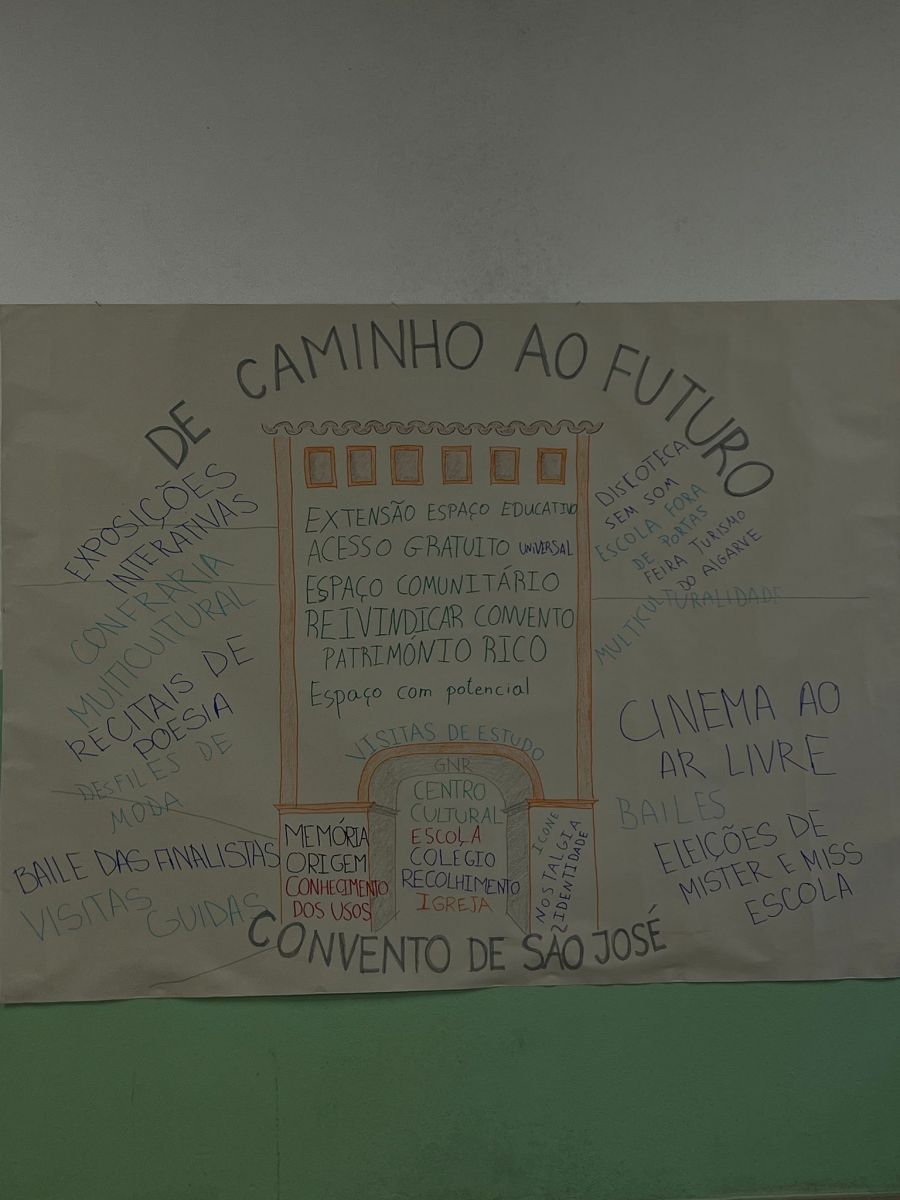On February 23rd, the Padre António Martins de Oliveira Secondary School in Lagoa hosted the 3rd Collaborative Workshop (LC3), organized as part of the CONVENTUS Project. Aiming to explore the youth’s relationship with this historic space, the initiative promoted an exercise in active listening and creative co-creation.
The session was attended by about 15 students and three teachers from the Secondary School, belonging to the professional courses of Tourist Animation (10th grade) and Tourism (11th and 12th grades), aged between 15 and 20 years old. In addition to the young audience, around ten community members who have been following and participating in the CONVENTUS project team also took part.
The meeting began with a brief presentation of the project and the organizing team, followed by the activity “The Human Web of Lagoa,” in which participants, connected by a ball of colorful yarn, reflected on the importance of community, belonging, and the interconnection between current generations.
Participants were then divided into three working groups, each addressing a temporal perspective on the Convent:
🟢 Green Group – Past: What do I want you for?
🟠 Orange Group – Present: How do you feel?
🔴 Red Group – Future: How do I see you?
Through a process of collective reflection and democratic synthesis, the groups expressed their perceptions and ideas on thematic posters, exploring memories, current experiences, and future possibilities for the Convent of São José.
Next, each group presented their conclusions on a shared wall, where a Cultural Map was collaboratively created under the title “On the Path to the Future of the Convent of São José.”

The workshop concluded with a final collective circle, entitled “Symphony of Worlds,” where participants shared impressions and new inspirations for the future of the space. The event ended with an informal tea, encouraging open dialogue among those present.
LC3 reaffirmed the role of the Convent as a space of identity, culture, and participation, promoting an integrated vision of its past, present, and future through the eyes of the younger generations.